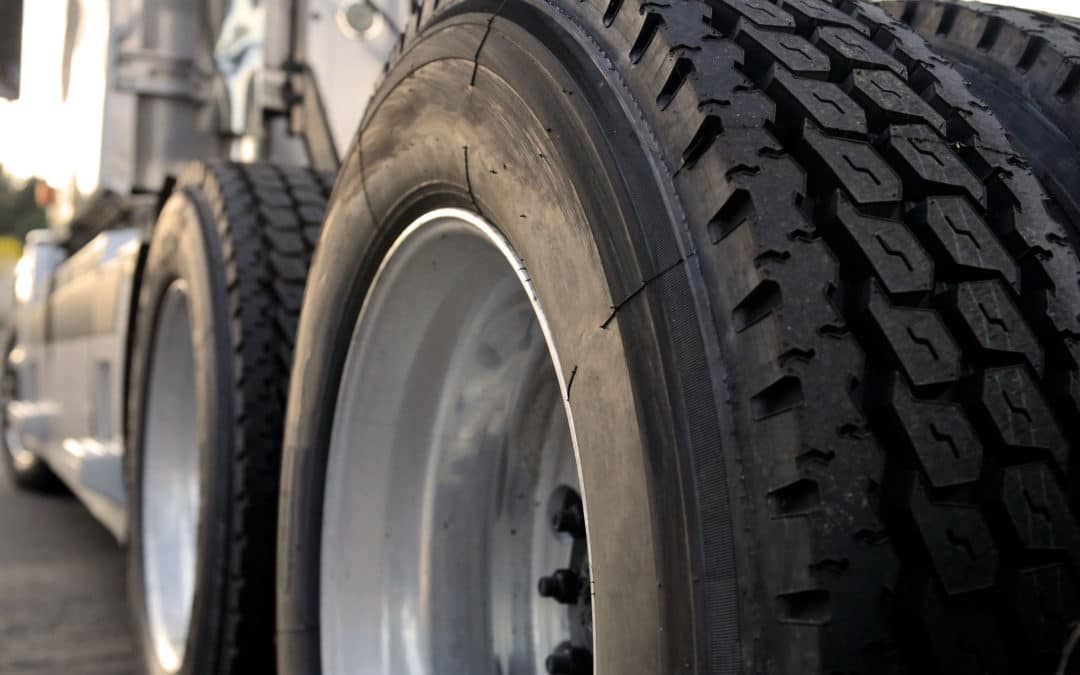We’ve all heard the phrase “where the rubber meets the road.” For any company that uses semi trailers to haul products or materials, that point is one that can have a significant effect on everything from fuel economy to safety. Knowing what to look for when purchasing tires and how to get the most life out of tires without creating a safety risk can be a key to success.
Key Considerations for Semi Trailer Tires
Whether you are purchasing trailer tires for your fleet or examining the tires on semi trailers for lease or rent, you should keep these things in mind:
- Tread depth. Not only do tires with deeper tread last longer, they’re also more resistant to punctures. The U.S. Department of Transportation requires that semi trailer tires have a tread depth of at least 2/32”. However, most people who have industry experience will say that exceeding that minimum is advised. A depth of 6/32” or more is ideal for semi trailer tires.
- Fuel efficiency. By some estimates, semi trailer tires account for 40-50% of overall fuel economy for the rig. Drive tires and steer tires are responsible for 30-40% and 15-20% respectively. The impact tires have on fuel efficiency is affected by other factors as well. Things like the rolling resistance rating of a tire, the weight of your loads and whether you choose traditional dual tires or wide-base tires are also very important.
- Type of trailer. Different types of trailers affect tires differently. For example, spread-axle trailers tend to create more wear and tear than others.
- Type of driving. The right semi trailer tire for you depends on the kind of driving you do. For long hauls, it’s important to have tires that deliver extended wear and that have low rolling resistance. If your driving is primarily local, thicker tread and specially designed sidewalls can help protect a tire from the additional puncture hazards and issues like “curbing.”
- Tire repositioning. Drive and steer casing tires can, in many cases, be moved to the trailer to extend their life. Doing so saves you money in the long run. You just need to be sure you monitor these older tires closely, as they may be rapidly approaching the end of their useful life—and you definitely don’t want to leave them on the trailer beyond that point.
- Retreading as an option. Retreading tires may be a way to get the performance you need and the cost-effectiveness you want. However, it is important that you insist on a high-quality casing that will keep the tire in good shape for years to come.
The Cost of Neglecting Your Semi Trailer Tires
In some operations, semi trailers become “graveyards” for tires that have been used and worn down as drive or steer tires before being shifted back to the trailer. Then, because fuel economy tends to increase as tread depth decreases, the company will run the trailer tires down to the point that they have very little rubber providing protection from punctures and road hazards. The next thing you know, a tire has blown and the rig is on the side of the road waiting for assistance.
And, of course, that assistance isn’t cheap. A typical tire service call today costs around $1,000 including a new tire. So, the money saved through getting better mileage is quickly consumed by what you spend to get back on the road. Plus, there’s the loss of goodwill and potentially a tarnished reputation when a three-hour delay in arrival time leaves a customer angry and frustrated. And the driver surely isn’t too thrilled, either!
Pre-Trip Tire Inspection Checklist
Each time your drivers head out on the road—and after long stretches on an extended trip—they should do this six-point inspection:
- Check for proper inflation. Tires should be at or very near their recommended pressure. And dual tires should be within 10 psi of one another.
- Inspect the valve caps. They should be properly secured.
- Check tread depth and wear. The tread on each tire should be at an acceptable depth and there should not be any evidence of an unusual wear pattern.
- Check for damage. Are there nails or other items embedded in the tread? Are there significant cuts in the tread? Are there bulges in the sidewall? Any of these issues means you should replace the tire. And it’s better to do that before your trip than after you’re on the road!
- Inspect the wheel and lug nuts. Rust or damage is cause for concern and a closer look.
- Check the suspension. Look for any components that need to be repaired or replaced.
Performing this inspection regularly does take some time and effort, but the payoff in preventing a problem on the road makes it very much worth it. Plus, the more times you evaluate your semi trailer tires and suspension, the easier it becomes to spot something that isn’t right and the more quickly you can go through all six steps on the checklist.
Leasing Semi Trailers With Tires That Are Good to Go
At Boxwheel, when we lease semi trailers, they roll off our lot with tires that are in top condition and provide excellent performance. If you have questions about our inventory of trailers for rent, lease or sale, or our company in general, we’re happy to answer them. Please contact us at your convenience, or stop by our Colorado or Arizona location.

